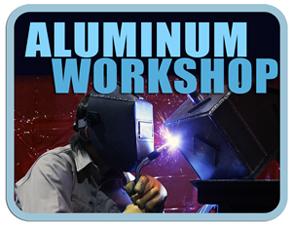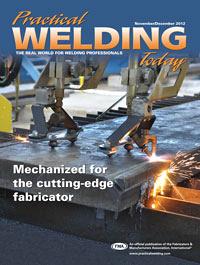President
- FMA
- The Fabricator
- FABTECH
- Canadian Metalworking
Categories
- Additive Manufacturing
- Aluminum Welding
- Arc Welding
- Assembly and Joining
- Automation and Robotics
- Bending and Forming
- Consumables
- Cutting and Weld Prep
- Electric Vehicles
- En Español
- Finishing
- Hydroforming
- Laser Cutting
- Laser Welding
- Machining
- Manufacturing Software
- Materials Handling
- Metals/Materials
- Oxyfuel Cutting
- Plasma Cutting
- Power Tools
- Punching and Other Holemaking
- Roll Forming
- Safety
- Sawing
- Shearing
- Shop Management
- Testing and Measuring
- Tube and Pipe Fabrication
- Tube and Pipe Production
- Waterjet Cutting
Industry Directory
Webcasts
Podcasts
FAB 40
Advertise
Subscribe
Account Login
Search
Aluminum Workshop: Welding steel to aluminum—Is it feasible?
- By Frank Armao
- Updated January 24, 2023
- November 19, 2014
- Article
- Aluminum Welding
Can you weld steel to aluminum?
Q: I’m building a horse trailer and I need to join some aluminum parts to the steel frame. Can I use arc welding to do this?
A: Surprisingly, yours is a very common question that I feel should be addressed. While solid-state joining processes like friction stud welding and flash butt welding can join aluminum and steel together, you will not be able to do this using GTAW or GMAW. In this case, it would be better to actually bolt the parts together.
However, before you bolt these parts together, it pays to review a lesson from your high school chemistry class. Try to recall the electromagnetic field (EMF) chart, which showed the electrochemical potential of each of the metallic elements. When you put two dissimilar metals in electrical contact in the presence of a conductor such as salt water, a voltage is produced and the metal that is higher in the EMF chart is preferentially corroded. This is called galvanic corrosion. When you join aluminum and steel together, the aluminum will be preferentially corroded. Surprising, isn’t it, since we think of aluminum as being more corrosion-resistant than steel? In fact, aluminum is more resistant to general corrosion than steel. What I am describing here is a preferential corrosion that occurs locally at an aluminum/steel joint.
Galvanic Corrosion in Steel to Aluminum Welding
So how do you avoid galvanic corrosion? You electrically insulate the aluminum from the steel. The best way to do this is to use bolts and nuts to make the joint. Use an isolating coating or paint on the aluminum and the steel to isolate them electrically. However, all of your effort will go for nothing if you just bolt the joint together. You must isolate the bolt and nut from the aluminum and steel. You do this by putting a nonconducting plastic washer between the bolt head and one side of the joint and another nonconducting washer between the nut and the other side of the joint. If the pieces being bolted are thick enough, you should also buy a nonconducting sleeve to fit on the shaft of the bolt to keep it from making contact with the steel or aluminum.
The Nuts and Bolts of Welding Steel to Aluminum
So what sort of bolts and nuts should you use—steel, aluminum, stainless steel? If you have done a good job insulating the nut and bolt from the aluminum and steel, it doesn’t really matter.
About the Author

Frank Armao
Aluminum Consulting Inc.
440-479-0239
About the Publication
Related Companies
subscribe now

The Welder, formerly known as Practical Welding Today, is a showcase of the real people who make the products we use and work with every day. This magazine has served the welding community in North America well for more than 20 years.
start your free subscription- Stay connected from anywhere

Easily access valuable industry resources now with full access to the digital edition of The Fabricator.

Easily access valuable industry resources now with full access to the digital edition of The Welder.

Easily access valuable industry resources now with full access to the digital edition of The Tube and Pipe Journal.
- Podcasting
- Podcast:
- The Fabricator Podcast
- Published:
- 04/16/2024
- Running Time:
- 63:29
In this episode of The Fabricator Podcast, Caleb Chamberlain, co-founder and CEO of OSH Cut, discusses his company’s...
- Trending Articles
Sheffield Forgemasters makes global leap in welding technology

Welding student from Utah to represent the U.S. at WorldSkills 2024

Lincoln Electric announces executive appointments

Lincoln Electric acquires RedViking

Engine-driven welding machines include integrated air compressors

- Industry Events
16th Annual Safety Conference
- April 30 - May 1, 2024
- Elgin,
Pipe and Tube Conference
- May 21 - 22, 2024
- Omaha, NE
World-Class Roll Forming Workshop
- June 5 - 6, 2024
- Louisville, KY
Advanced Laser Application Workshop
- June 25 - 27, 2024
- Novi, MI



























